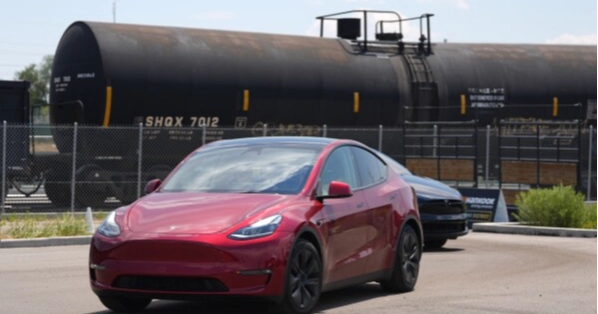Tesla begins robotaxi test run in Austin
Tesla begins robotaxi test run in Austin

After years of ambitious promises and delays, Elon Musk’s long-touted vision of Tesla “robotaxis” is finally hitting the road — albeit modestly — with a small pilot program launched in Austin, Texas, on Sunday.
Tesla began testing 10 to 12 self-driving taxis in a limited, geofenced area of Austin, with each ride costing a flat fee of \$4.20. The vehicles are being remotely monitored and have a person in the passenger seat to intervene if needed, as reported by AP.
Musk took to X to share the news, writing, “The @Tesla\_AI robotaxi launch begins in Austin this afternoon with customers paying a \$4.20 flat fee!”
The test run marks a significant moment for Tesla, especially after repeated delays since Musk first promised autonomous taxis back in 2019. At the time, he said they would be operational “next year,” a promise he repeated annually without fulfillment. Most recently, in early 2023, Musk claimed Tesla would have “over a million robotaxis” on the road by 2024.
While only a dozen vehicles are active now, Musk has vowed rapid expansion of the service, predicting “hundreds of thousands if not a million vehicles next year.” However, industry analysts remain skeptical.
“How quickly can he expand the fleet?” asked Garrett Nelson, an analyst at CFRA. “We’re talking maybe a dozen vehicles initially. It’s very small.”
Tesla faces growing pressure from several fronts. Political backlash and boycotts linked to Musk’s statements have contributed to plunging sales. Competitors, including Waymo — which just celebrated its 10 millionth paid ride — have pulled ahead with more mature self-driving technology. Waymo uses a sensor suite combining cameras, radar, and lidar, in contrast to Tesla’s camera-only system.
Despite recent turbulence, including a \$150 billion stock decline after Musk’s public clash with President Biden, Tesla’s stock has shown resilience, closing Friday at \$322, up from about \$18 a decade ago.
Critics have long challenged Tesla’s “Full Self-Driving” system, arguing it’s misleadingly named and not truly autonomous. Federal safety regulators and the Department of Justice have investigated FSD following accidents and lawsuits, though some legal challenges have been dismissed. In one such case, a judge ruled plaintiffs failed to prove Musk “knowingly” made false claims.
Nonetheless, Musk insists that the improved FSD will power Tesla’s robotaxis safely and allow for swift nationwide rollout. His strategy includes transforming existing Teslas on the road into robotaxis via an over-the-air software update. Owners would be able to earn money by adding their vehicles to the fleet while they’re at work or away, a model Musk compared to Airbnb.
“Instead of having your car sit in the parking lot, your car could be earning money,” Musk said earlier this year. “You will be able to add or subtract your car to the fleet.”
Musk also maintains that Tesla’s reliance on cameras rather than expensive sensors gives the company an edge in scaling operations quickly. “Tesla will have, I don’t know, 99% market share or something ridiculous,” he said during a recent investor call.
Dan Ives of Wedbush Securities remains optimistic: “This time Musk may actually pull it off because of Tesla’s ability to scale up quickly.” And while analysts like Goldstein remain cautious, they admit Musk has defied expectations before.
“Maybe his timelines aren’t realistic,” Goldstein said, “but he can develop futuristic technology products.”


